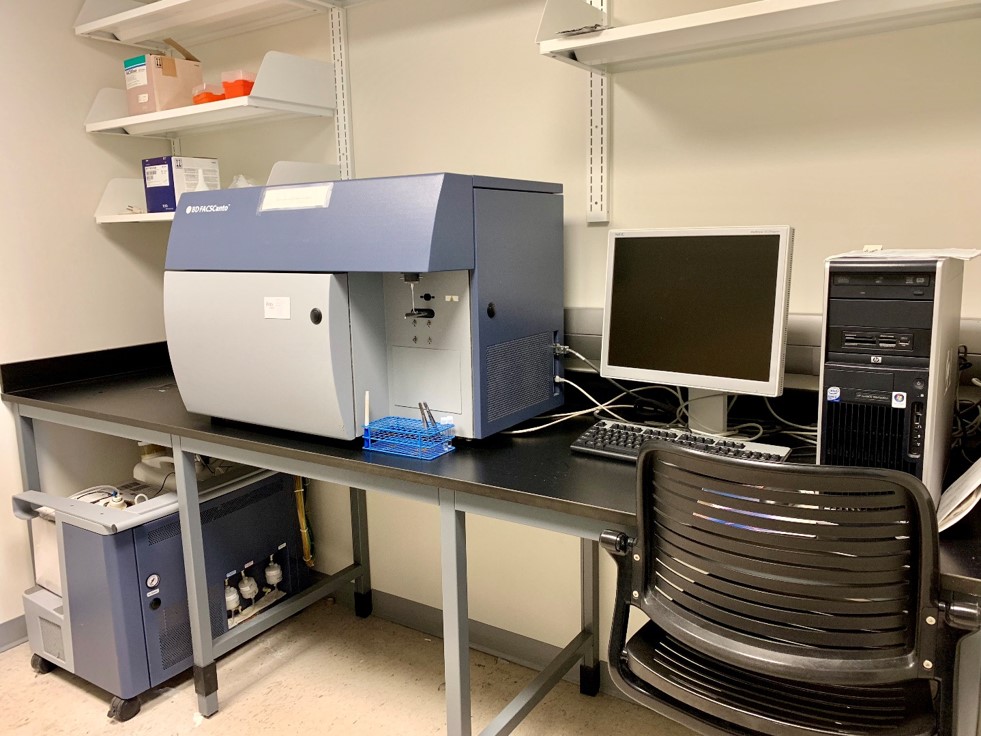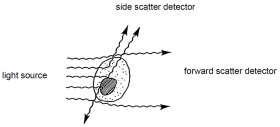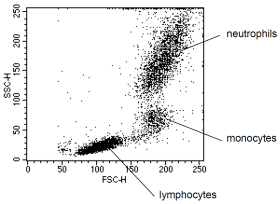Introduction to flow cytometry
 Flow cytometry is a biophysical technology used for cell counting and biomarker detection within a heterogeneous population. It simultaneously measures andanalyses multiple physical and chemical characteristics of particles, usually cells, as they flow in a fluid stream through a beam of light. Any suspended particle or cell from 0.2–150 micrometers in size is suitable for analysis, and up to thousands of particles per second can be analyzed. Cells from tissues must be disaggregated before analysis.
Flow cytometry is a biophysical technology used for cell counting and biomarker detection within a heterogeneous population. It simultaneously measures andanalyses multiple physical and chemical characteristics of particles, usually cells, as they flow in a fluid stream through a beam of light. Any suspended particle or cell from 0.2–150 micrometers in size is suitable for analysis, and up to thousands of particles per second can be analyzed. Cells from tissues must be disaggregated before analysis.
There are two main physical parameters that are used in flow cytometry: light scattering and fluorescence.

1) Light scattering
Light scattering occurs when a particle deflects incident laser light. Forward-scattered light (FSC) is a measurement of the light diffracted by the particle and is proportional to its size. Side-scattered light (SSC) is a measurement of refracted and reflected light from the particle. SSC is proportional to cell granularity and internal complexity

Correlation between FCS and SCC can be used to differentiate between different cell types in a heterogeneous cell population.
For instance, the figure on the right shows how light scattering can be used to differentiate between leucocyte subpopulations in the blood. As opposed to neutrophils, lymphocytes are small leucocytes with low internal complexity.
2) Fluorescence
Fluorochromes, such as fluorescently-labelled antibodies, can be used to detect target proteins. Cell types or subpopulations within a cell type can therefore be differentiated by labelling multiple cell markers.
For instance, the cell surface proteins known as clusters of differentiation (CD) are widely used in immunology to differentiate between different cell subpopulations. The example provided below shows how lymphocytes, differentiated from other blood cells by light scattering, can be further differentiated into subpopulations by fluorescence based on the surface expression of CDs (CD3, CD16, and CD19).


Technical Specifications
Laser lines
Emission filters
Excitation filters (nm)
|
Intended dyes
|
| 515-545 |
FITC |
| 574-606 |
PE |
| 670LP |
PerCP-Cy5.5 / PerCP
|
| 650-670 |
APC |
| 750-810 |
PE-Cy7 / APC-Cy7 |
Software
BD FACSDiva for acquisition and FlowJo for data analysis